Balkinization
an unanticipated consequence of
Jack M. Balkin
Balkinization Symposiums: A Continuing List
E-mail:
Jack Balkin:
jackbalkin at yahoo.com
Bruce Ackerman
bruce.ackerman at yale.edu
Ian Ayres
ian.ayres at yale.edu
Corey Brettschneider
corey_brettschneider at brown.edu
Mary Dudziak
mary.l.dudziak at emory.edu
Joey Fishkin
joey.fishkin at gmail.com
Heather Gerken heather.gerken at yale.edu
Abbe Gluck abbe.gluck at yale.edu
Mark Graber
mgraber at law.umaryland.edu
Stephen Griffin
sgriffin at tulane.edu
Jonathan Hafetz
jonathan.hafetz at shu.edu
Jeremy Kessler
jkessler at law.columbia.edu
Andrew Koppelman
akoppelman at law.northwestern.edu
Marty Lederman
msl46 at law.georgetown.edu
Sanford Levinson
slevinson at law.utexas.edu
David Luban
david.luban at gmail.com
Gerard Magliocca
gmaglioc at iupui.edu
Jason Mazzone
mazzonej at illinois.edu
Linda McClain
lmcclain at bu.edu
John Mikhail
mikhail at law.georgetown.edu
Frank Pasquale
pasquale.frank at gmail.com
Nate Persily
npersily at gmail.com
Michael Stokes Paulsen
michaelstokespaulsen at gmail.com
Deborah Pearlstein
dpearlst at yu.edu
Rick Pildes
rick.pildes at nyu.edu
David Pozen
dpozen at law.columbia.edu
Richard Primus
raprimus at umich.edu
K. Sabeel Rahmansabeel.rahman at brooklaw.edu
Alice Ristroph
alice.ristroph at shu.edu
Neil Siegel
siegel at law.duke.edu
David Super
david.super at law.georgetown.edu
Brian Tamanaha
btamanaha at wulaw.wustl.edu
Nelson Tebbe
nelson.tebbe at brooklaw.edu
Mark Tushnet
mtushnet at law.harvard.edu
Adam Winkler
winkler at ucla.edu
Compendium of posts on Hobby Lobby and related cases
The Anti-Torture Memos: Balkinization Posts on Torture, Interrogation, Detention, War Powers, and OLC
The Anti-Torture Memos (arranged by topic)
Recent Posts
Response to the Symposium on Until Justice Be Done
Just A Few Blogs
ACS Blog
Alas, a Blog
Althouse
Arts and Letters Daily
Atrios (Eschaton)
Bill of Health
Buzzflash.com
Buzz Machine
Cato at Liberty
Juan Cole (Informed Comment)
Concurring Opinions
The Constitution in 2020
Corrente
Crooked Timber
Daily Howler
Daily Kos
Dana Boyd
Brad DeLong
Digby (Hullabaloo)
Discriminations
Daniel Drezner
Kevin Drum (Mother Jones)
Electrolite
En Banc
Eunomia (Daniel Larison)
Fafblog
Michael Froomkin (Discourse.net)
GovLab (Beth Noveck)
Rick Hasen (Election Law)
History News Network
How Appealing
Ignatz (Sam Heldman)
The Importance of (Ernie Miller)
Infolaw
Instapundit
International Economic Law and Policy Blog
IntLawGrrls
Jacob Levy
Jesus' General
Jurisdynamics
The Kitchen Cabinet
Mark Kleiman
Law Blog Central
Larry Lessig
Lawyers, Guns and Money
Liberal Oasis
Brian Leiter's Law School Reports
The Leiter Reports
Marginal Revolution
Megan McArdle
Memeorandum
Metafilter
Mirror of Justice
The New Republic
Newseum
No More Mister Nice Blog
Brendan Nyhan
Opinio Juris
Orcinus
The Originalism Blog
Pandagon
Passport (Foreign Policy)
Overcoming Bias
Political Animal (Washington Monthly)
Political Theory Daily Review
Political Wire (Taegan Goddard)
The Poor Man
Virginia Postrel
Prawfsblawg
Public Reason
Jonathan Rauch
Raw Story
Redstate
ReligiousLeftLaw.com
Reporters Committee For Freedom of the Press
Reproductive Rights Blog
Rothman's Roadmap to the Right of Publicity
SCOTUS Blog
Seeing the Forest
Clay Shirky
The Shifted Librarian
The Situationist
Larry Solum (Legal Theory)
Andrew Sullivan
Talking Points Memo
Talk Left
Tapped
Tbogg
TechPresident
The Paper Chase (Jurist)
Tom Paine
Tom Tomorrow (This Modern World)
Eve Tushnet
Uggabugga
University of Chicago Law School Faculty Blog
Unqualified Offerings
The Volokh Conspiracy
War and Piece (Laura Rozen)
Wampum
Oliver Willis
Wonkette
Written Description
Matthew Yglesias
Yin
Your Choice of Feeds
1. XML
powered by
2. Atom Feed
3. RSS 2.0
Response to the Symposium on Until Justice Be Done
Guest Blogger
For the Symposium on Kate Masur, Until Justice Be Done: America's First Civil Rights Movement, From the Revolution to Reconstruction (W. W. Norton & Company, 2021). Kate Masur I begin this response
with thanks, first to Jack Balkin and Balkinization for hosting this forum, and
above all to the eight scholars who took time to read and engage with Until
Justice Be Done. Each one had already influenced my own perspectives on
history and law, and I so appreciate their attention and insights. I’m grateful that
my work seems to have spoken to readers in ways that I hoped it would. My
primary aim was to write a book that illuminated antebellum struggles over
racial equality and thereby cast the 1866 Civil Rights Act and the
Reconstruction amendments in a new light. This meant shifting from the conventional
antebellum focus on the politics of slavery and antislavery to a focus on race,
rights, and citizenship. As William Novak writes, “the crisis of slavery frames
this whole book,” but my emphasis is on “the distinctive rights claims of free
African Americans.” As Sandy Levinson and others also note, I departed from the
prevailing tendency to focus on the federal level and emphasized, instead, the state
and local arenas, where jurisdiction over questions of individual status and
rights largely resided. When we turn to those areas, we see in new ways how Black
Americans actively participated in framing and advancing the conversation about
race, governance, and law. We also see the essential role played by political coalitions
in which people with varying motivations and perspectives united behind the
principle of racial equality in what were then considered “civil rights.” A different cast
of characters comes into view – not necessarily the elite theorists, judges, or
lawmakers who are most often the subjects of scholarship in constitutional law,
but everyday people who took part in a broad-based movement that insisted that
racist laws had no place in American life. As Gerard Magliocca and several
others observe, this approach also entails looking well beyond the courts and
even beyond voting as a means of fomenting political change. The judicial
system was of limited use to reformers when state courts readily deferred to
state legislatures, and when federal jurisdiction over such matters was
extremely limited. Participants in the first civil rights movement therefore
turned to petitioning state legislatures and using the press to draw attention
to abuses. Black activists often gathered in their own organizations and
published addresses to white people, calling on them to do better. I’m not the
first historian to write about people like Ohioans John Malvin and David
Jenkins, or the Illinoisans John and Mary Richardson Jones. But I am happy to
join in elevating these individuals – and their ideas, their allies, and the causes
for which they fought – and helping thereby readers understand the diversity
and richness of nineteenth-century Black thought and action. My aim was
also to provide an account of how it was that, by 1860, the free states had
become home to a powerful political party — the Republicans — whose leadership
was willing to fight for the principle of racial equality. Fifty-one years ago,
Eric Foner wrote that by 1859, Republicans generally agreed that free Black
people “were human beings and citizens of the United States, entitled to the
natural rights of humanity and to such civil rights as would protect the
natural rights of life, liberty, and property.” Yet, few historians seemed to
have noticed that this analysis contradicted the widespread view, found in the
work of Leon Litwack and others, that white northerners were unrelentingly
racist, even if many opposed the spread of slavery. I wanted to make sense of this
contradiction in the literature and to bridge conventional boundaries of periodization
to explain how prewar northern politics shaped Republican policies during the
Civil War and Reconstruction. My
interlocutors’ commentaries were generous and wide-ranging, and it’s impossible
to do them all justice here, so I’ve picked out a few themes to highlight below:
periodization, rights and police powers, Section One of the Fourteenth Amendment,
and how change happens. I appreciate Kunal
Parker’s reflections on how the subtitle’s phrase, “America’s First Civil
Rights Movement,” implies a kind of teleology from the “first” to the “second,”
more familiar movement of the 1950s and 1960s, a comment he places in the
context of his larger interest in choices we make when “setting things in
relation to one another.” I would add that if the “first” civil rights movement
occurred in the antebellum period, then the second ensued during
Reconstruction, and the conventional “civil rights movement” would really be
the third. But there are other ways of describing similar chronologies. A new
book by historian Van Gosse is entitled The First Reconstruction: Black
Politics in America from the Revolution to the Civil War. My sense is that Gosse
and I, together with other historians, are working toward a long history of this
country’s struggles to come to grips with the legacies of slavery. I begin the
book by discussing how northerners contended with implications of abolishing
slavery at the state level because in my view the unifying theme is not really
“civil rights” as such, but rather how people work out questions of race,
equality, and citizenship when race-based slavery is abolished. I also agree
with Parker that it’s important to recognize the continuing power and
importance of slavery during the period I write about. African Americans living
in free states surely could not escape slavery’s tentacles. This was most
obvious in questions associated with “fugitive slaves” and kidnapping, a critical
and terrifying set of problems for free Black people. But the particular constraints
imposed by racial animus in the free states themselves were also very real. Living
in places where slavery had been outlawed, the people I write about devoted
considerable energy to fighting for the kinds of things that Black people in postslavery
societies have fought for everywhere, including equal access to property, the
courts, and public education, justice in law enforcement, and all the
perquisites of citizenship. In my view, these struggles were well worth examining
in their own right and for how they shaped federal policy in the 1860s. As the book
indicates, I also became very interested in how Americans drew on the concept
of “police powers” to justify anti-black policies. As many readers will be
aware, the “police powers” are the vast array of powers that governments (in
this case, typically state governments) may wield in the name of protecting the
public welfare. As Novak and others have shown, governments have justified all
manner of restrictions on individual rights with recourse to police powers –
and they still do. In my book, state legislatures regularly used police-powers
arguments to defend the existence and enforcement of anti-black laws. Yet, as Laura
Edwards reminds us, police-powers arguments may also be used in ways that help protect
vulnerable people or mitigate oppression, as when state minimum wage laws
restrict the rights of business owners to pay whatever they choose, or when state
governments adopt policies requiring masks and limiting public gatherings in an
effort to slow the spread of a deadly virus. The activists
I write about were not critical of all exercises of police powers. Rather, they
aimed, as Novak writes, to “produc[e] an anti-discrimination limitation on
state police power.” The central idea that held the movement together was that however
expansive the police powers of the states might be, states must not subject
people to special regulations based on race. Activists were not just theorizing
about this. They were trying to get people elected who would put the idea into
practice. That is, they hoped to change how the state government defined the
public good and wielded the police power. It was not,
therefore, a binary question of rights vs. police powers. Racial equality activists’
position could be framed in terms of rights – for example, they argued that a
person’s “right” to move from state to state, or to testify in court, should
not be limited because of their race. But it could also be framed in terms of
police powers – for example, they argued that it was best for the public welfare
to repeal racially discriminatory laws. At the 1847 Illinois constitutional
convention, for example, some argued against a Black exclusion measure by
saying it would discourage industrious settlers from moving into the state, while
others suggested that such a law would violate the rights of free Black people
under the Constitution’s Privileges and Immunities Clause (pp. 229-30 of Until
Justice Be Done). Those who demanded repeal of anti-black laws regularly made
both kinds of arguments. Having spent
a lot of time thinking about Reconstruction, I began this project with a strong
interest in how antebellum politics shaped the Republicans who took power in
the 1860s and, in particular, how antebellum struggles over race and equality
shaped the first federal civil rights measures: the Civil Rights Act of 1866
and the Fourteenth Amendment. Although Mark Graber suggests that my attention
to Section One of the Fourteenth Amendment is misplaced, his description of
“constitutional politics” helps explain why I thought it was important. Graber
alleges that the Fourteenth Amendment was not the culmination of the struggles
described in the book. “Most Republicans,” he says, believed the Thirteenth Amendment
combined with the Civil Rights Act of 1866 would accomplish their goal of
putting federal power behind the principle of racial equality. John Bingham was
indeed an outlier among Republicans for believing that the Civil Rights Act was
unconstitutional when passed, and Bingham of course had a great deal to do with
creating Section One. As Graber implies and others have observed, we might have
been better off without Section One, since the proposition that the Thirteenth Amendment
barred not only slavery itself but also its “badges and incidents” would have
provided a much broader basis for anti-racist legislation and enforcement than
Section One’s cramped “state action” language. The reality,
however, is that we did end up with Section One of the Fourteenth Amendment,
and there’s no use wishing it away, not least because of its importance for rights
claims in the twentieth and twenty-first centuries. In addition, though, Section
One represents a victory of precisely the kind of “constitutional politics”
that Graber extols. Graber observes that participants in the first civil rights
movement “sought to manipulate existing constitutional texts, legal precedents,
and governing institutions so as to make their constitutional vision the
official law of the land or at least of their home state.” This is exactly how
I see it. The more I considered Section One, the more I realized that its two
distinct strands – one concerning citizenship and concerning personhood – quite
precisely reflected two distinct but related strands of constitutional
politicking for racial equality during the antebellum decades. On the one
hand, since at least the early 1820s and the congressional debate about
anti-black provisions in the Missouri constitution, people made claims for
racial equality in citizenship by drawing on the Constitution’s Privileges
and Immunities Clause. On the other, advocates claimed racial equality not as
citizens but as persons in the many situations in which it didn’t make
sense to connect their claims to the Privileges and Immunities Clause. That is,
participants in the movement regularly claimed that racist laws should be
repealed, or that Black people were entitled to the same rights as whites, not
because they were citizens but because they were persons, and because race-based
discrimination was wrong. As Allison
Tirres notes, these differences mattered. Citizenship implied belonging in some
political entity while personhood did not, and distinctions in language
impinged differently not just on native-born white people and Black people, but
also on Native Americans, European immigrants, and immigrants from China. Section
One of the Fourteenth Amendment invokes the Privileges and Immunities Clause in
its ban on the denial of the privileges or immunities of citizens, and it
invokes the language of personhood in its affirmation that states may not deny
to persons equal protection or due process of law. Citizenship
and personhood seem to co-exist in Section One because they were both important
components of the highly engaged, energized constitutional politics that
characterized the preceding decades. The language reflects a
belt-and-suspenders approach that sought to address both strands – and also affirm
birthright citizenship – all at once. Michael Les Benedict points out that the promises
of “protection” for all persons (and citizens) stood to benefit not only Black
people facing racial discrimination but also white dissenters and minorities of
other kinds. Michael Kent Curtis and others have made this point, connecting Section
One with the history of anti-abolitionist mobbing and the suppression of
abolitionist speech in the slave states, as well as violence against white
Unionists in the former Confederacy. It’s also the case that the Supreme Court’s
choice in the 1870s and 1880s to, as Benedict writes, “limit Congress’s power
to offsetting state-mandated discriminations and crimes clearly motivated by
race” reflected not only a narrow interpretation of the amendments but also the
arrival of the anti-discrimination principle in the political mainstream. So did
laws barring racial discrimination in public accommodations passed by northern
and western states in the last third of the nineteenth-century. As I make clear
in the book, however, most of the people whom I write about did not advance
what we would call an intersectional analysis. Most who called for repeal of explicitly
racist laws did not also advocate sex equality or demand repeal of police laws
that infringed on the civil rights of paupers and vagrants. Nor did they have a
clairvoyant sense of how much force would be needed to suppress white violent supremacy. I appreciated
Edwards’ and Graber’s comments on how to advance a political agenda in which
the well-being of all people is prioritized. Although they come from different methodological
traditions, I think they’re suggesting something rather similar. Edwards
highlights the potential of “police powers” to overturn inequitable structures
(in contrast to claims of “rights,” which, she writes, tend to leave oppressive
structures in place and can create “a false equivalence among individuals of
vastly different circumstances”). But, as Edwards also indicates, to get
governments to put their police powers in the service of reducing structural
inequalities, you need to elect people who are committed to defining the public
good in a way that emphasizes everyone’s well-being. I read Graber as calling
for something similar, favoring a brawling “constitutional politics” over
“adjudication or constitutional reform” and admiring nineteenth-century
Republicans who sought power and then used it fearlessly. As Benedict also reminds
us, that was the approach favored by participants in the first civil rights
movement. When William Lloyd Garrison declared in 1865 that the abolitionists’
work was done, Frederick Douglass cited the racist laws of the free North and countered:
“while the black man is confronted in the legislation of the South by the word
‘white,’ our work as Abolitionists, as I conceive it, is not done.” I would add
that a crucial component of changing policy priorities is building coalitions. Part
of what I hoped to emphasize in the book was how an array of people, who
arrived at the cause from different positions and for different reasons, in
various ways came to support the principle of racial equality in civil rights. Indeed,
as Parker writes, the movement’s participants “pointed in radically different
directions.” Among the members of the coalition were Black activists who demanded
racial equality in “political rights” – the rights to vote and hold office.
Many of their white allies in the movement were not prepared to go that far.
Still it was possible to form a loose coalition whose members shared a baseline
view that free Black people should not be subjected to the kinds of legalized
discrimination and humiliation that they currently experienced. This expansive group
of people subscribed to the set of ideas about basic racial equality that
characterized the Republican consensus on the eve of the Civil War. And this,
in itself, was a momentous departure. No major political party had stood for
such ideas before. On the other side of the equation in northern politics were Stephen
Douglas and the Democrats, whose general view was, in Douglas’s words, that the
United States was “made by the white man, for the benefit of the white man, to
be administered by white men, in such manner as they should determine.” A strand of
political and constitutional thought continues to hold that the Founding
bestowed on the United States everything it needed to become a multiracial
democracy. In this view, the Reconstruction amendments represented the
continued unfolding of a cluster of great ideas that were always somehow destined
to be made real in American life. For me, the thoughtful commentary presented
here helps reinforce the view that ideas do not advance into policy on their
own; people make that happen through contests for power. After all, the world
is full of great ideas that remain untested. It was only through the hard work
of popular mobilization and coalition building, a certain kind of luck, and the
horrific violence of war, that the Republican vision triumphed for a time and,
in the process, gave shape to future struggles. Kate Masur is Associate Professor of History at Northwestern University. You can reach her by e-mail at kmasur at northwestern.edu.
Posted
9:30 AM
by Guest Blogger [link]
Books by Balkinization Bloggers

Gerard N. Magliocca, The Actual Art of Governing: Justice Robert H. Jackson's Concurring Opinion in the Steel Seizure Case (Oxford University Press, 2025)

Linda C. McClain and Aziza Ahmed, The Routledge Companion to Gender and COVID-19 (Routledge, 2024)

David Pozen, The Constitution of the War on Drugs (Oxford University Press, 2024)

Jack M. Balkin, Memory and Authority: The Uses of History in Constitutional Interpretation (Yale University Press, 2024)
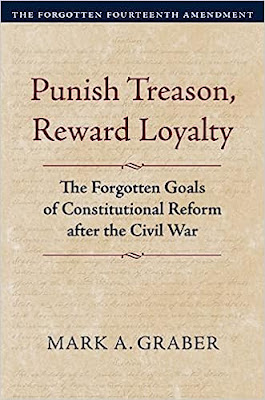
Mark A. Graber, Punish Treason, Reward Loyalty: The Forgotten Goals of Constitutional Reform after the Civil War (University of Kansas Press, 2023)
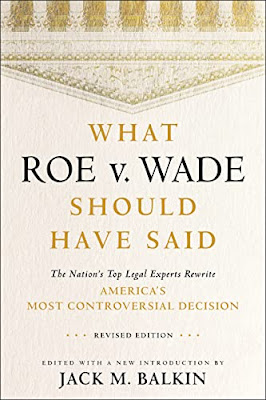
Jack M. Balkin, What Roe v. Wade Should Have Said: The Nation's Top Legal Experts Rewrite America's Most Controversial Decision - Revised Edition (NYU Press, 2023)

Andrew Koppelman, Burning Down the House: How Libertarian Philosophy Was Corrupted by Delusion and Greed (St. Martin’s Press, 2022)

Gerard N. Magliocca, Washington's Heir: The Life of Justice Bushrod Washington (Oxford University Press, 2022)
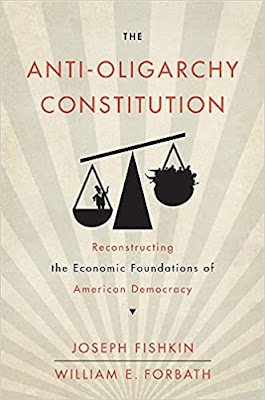
Joseph Fishkin and William E. Forbath, The Anti-Oligarchy Constitution: Reconstructing the Economic Foundations of American Democracy (Harvard University Press, 2022)
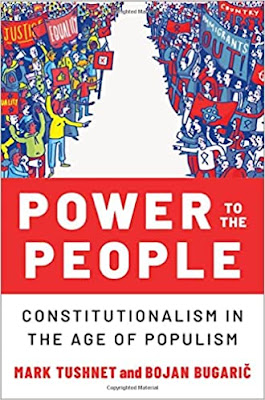
Mark Tushnet and Bojan Bugaric, Power to the People: Constitutionalism in the Age of Populism (Oxford University Press 2021).

Mark Philip Bradley and Mary L. Dudziak, eds., Making the Forever War: Marilyn B. Young on the Culture and Politics of American Militarism Culture and Politics in the Cold War and Beyond (University of Massachusetts Press, 2021).

Jack M. Balkin, What Obergefell v. Hodges Should Have Said: The Nation's Top Legal Experts Rewrite America's Same-Sex Marriage Decision (Yale University Press, 2020)

Frank Pasquale, New Laws of Robotics: Defending Human Expertise in the Age of AI (Belknap Press, 2020)

Jack M. Balkin, The Cycles of Constitutional Time (Oxford University Press, 2020)

Mark Tushnet, Taking Back the Constitution: Activist Judges and the Next Age of American Law (Yale University Press 2020).

Andrew Koppelman, Gay Rights vs. Religious Liberty?: The Unnecessary Conflict (Oxford University Press, 2020)

Ezekiel J Emanuel and Abbe R. Gluck, The Trillion Dollar Revolution: How the Affordable Care Act Transformed Politics, Law, and Health Care in America (PublicAffairs, 2020)

Linda C. McClain, Who's the Bigot?: Learning from Conflicts over Marriage and Civil Rights Law (Oxford University Press, 2020)
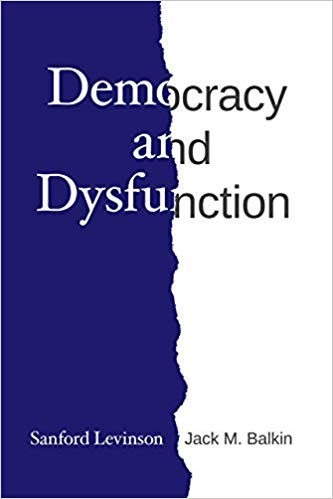
Sanford Levinson and Jack M. Balkin, Democracy and Dysfunction (University of Chicago Press, 2019)

Sanford Levinson, Written in Stone: Public Monuments in Changing Societies (Duke University Press 2018)

Mark A. Graber, Sanford Levinson, and Mark Tushnet, eds., Constitutional Democracy in Crisis? (Oxford University Press 2018)

Gerard Magliocca, The Heart of the Constitution: How the Bill of Rights became the Bill of Rights (Oxford University Press, 2018)

Cynthia Levinson and Sanford Levinson, Fault Lines in the Constitution: The Framers, Their Fights, and the Flaws that Affect Us Today (Peachtree Publishers, 2017)

Brian Z. Tamanaha, A Realistic Theory of Law (Cambridge University Press 2017)

Sanford Levinson, Nullification and Secession in Modern Constitutional Thought (University Press of Kansas 2016)

Sanford Levinson, An Argument Open to All: Reading The Federalist in the 21st Century (Yale University Press 2015)

Stephen M. Griffin, Broken Trust: Dysfunctional Government and Constitutional Reform (University Press of Kansas, 2015)

Frank Pasquale, The Black Box Society: The Secret Algorithms That Control Money and Information (Harvard University Press, 2015)

Bruce Ackerman, We the People, Volume 3: The Civil Rights Revolution (Harvard University Press, 2014)
Balkinization Symposium on We the People, Volume 3: The Civil Rights Revolution

Joseph Fishkin, Bottlenecks: A New Theory of Equal Opportunity (Oxford University Press, 2014)

Mark A. Graber, A New Introduction to American Constitutionalism (Oxford University Press, 2013)

John Mikhail, Elements of Moral Cognition: Rawls' Linguistic Analogy and the Cognitive Science of Moral and Legal Judgment (Cambridge University Press, 2013)

Gerard N. Magliocca, American Founding Son: John Bingham and the Invention of the Fourteenth Amendment (New York University Press, 2013)

Stephen M. Griffin, Long Wars and the Constitution (Harvard University Press, 2013)

Andrew Koppelman, The Tough Luck Constitution and the Assault on Health Care Reform (Oxford University Press, 2013)

James E. Fleming and Linda C. McClain, Ordered Liberty: Rights, Responsibilities, and Virtues (Harvard University Press, 2013)
Balkinization Symposium on Ordered Liberty: Rights, Responsibilities, and Virtues

Andrew Koppelman, Defending American Religious Neutrality (Harvard University Press, 2013)

Brian Z. Tamanaha, Failing Law Schools (University of Chicago Press, 2012)

Sanford Levinson, Framed: America's 51 Constitutions and the Crisis of Governance (Oxford University Press, 2012)

Linda C. McClain and Joanna L. Grossman, Gender Equality: Dimensions of Women's Equal Citizenship (Cambridge University Press, 2012)

Mary Dudziak, War Time: An Idea, Its History, Its Consequences (Oxford University Press, 2012)

Jack M. Balkin, Living Originalism (Harvard University Press, 2011)

Jason Mazzone, Copyfraud and Other Abuses of Intellectual Property Law (Stanford University Press, 2011)

Richard W. Garnett and Andrew Koppelman, First Amendment Stories, (Foundation Press 2011)

Jack M. Balkin, Constitutional Redemption: Political Faith in an Unjust World (Harvard University Press, 2011)

Gerard Magliocca, The Tragedy of William Jennings Bryan: Constitutional Law and the Politics of Backlash (Yale University Press, 2011)

Bernard Harcourt, The Illusion of Free Markets: Punishment and the Myth of Natural Order (Harvard University Press, 2010)

Bruce Ackerman, The Decline and Fall of the American Republic (Harvard University Press, 2010)
Balkinization Symposium on The Decline and Fall of the American Republic

Ian Ayres. Carrots and Sticks: Unlock the Power of Incentives to Get Things Done (Bantam Books, 2010)

Mark Tushnet, Why the Constitution Matters (Yale University Press 2010)
Ian Ayres and Barry Nalebuff: Lifecycle Investing: A New, Safe, and Audacious Way to Improve the Performance of Your Retirement Portfolio (Basic Books, 2010)
.jpg)
Jack M. Balkin, The Laws of Change: I Ching and the Philosophy of Life (2d Edition, Sybil Creek Press 2009)

Brian Z. Tamanaha, Beyond the Formalist-Realist Divide: The Role of Politics in Judging (Princeton University Press 2009)
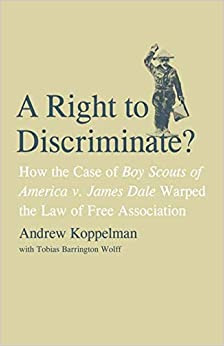
Andrew Koppelman and Tobias Barrington Wolff, A Right to Discriminate?: How the Case of Boy Scouts of America v. James Dale Warped the Law of Free Association (Yale University Press 2009)

Jack M. Balkin and Reva B. Siegel, The Constitution in 2020 (Oxford University Press 2009)
Heather K. Gerken, The Democracy Index: Why Our Election System Is Failing and How to Fix It (Princeton University Press 2009)

Mary Dudziak, Exporting American Dreams: Thurgood Marshall's African Journey (Oxford University Press 2008)

David Luban, Legal Ethics and Human Dignity (Cambridge Univ. Press 2007)

Ian Ayres, Super Crunchers: Why Thinking-By-Numbers is the New Way to be Smart (Bantam 2007)

Jack M. Balkin, James Grimmelmann, Eddan Katz, Nimrod Kozlovski, Shlomit Wagman and Tal Zarsky, eds., Cybercrime: Digital Cops in a Networked Environment (N.Y.U. Press 2007)
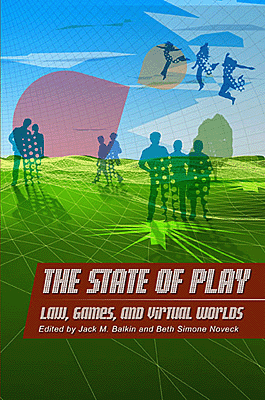
Jack M. Balkin and Beth Simone Noveck, The State of Play: Law, Games, and Virtual Worlds (N.Y.U. Press 2006)

Andrew Koppelman, Same Sex, Different States: When Same-Sex Marriages Cross State Lines (Yale University Press 2006)
Brian Tamanaha, Law as a Means to an End (Cambridge University Press 2006)
Sanford Levinson, Our Undemocratic Constitution (Oxford University Press 2006)
Mark Graber, Dred Scott and the Problem of Constitutional Evil (Cambridge University Press 2006)
Jack M. Balkin, ed., What Roe v. Wade Should Have Said (N.Y.U. Press 2005)
Sanford Levinson, ed., Torture: A Collection (Oxford University Press 2004)
Balkin.com homepage
Bibliography
Conlaw.net
Cultural Software
Writings
Opeds
The Information Society Project
BrownvBoard.com
Useful Links
Syllabi and Exams